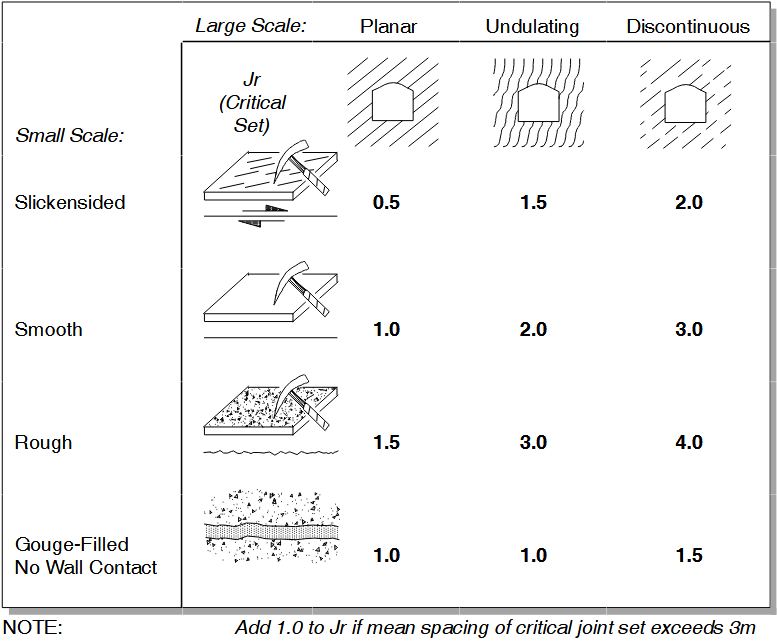Q-System#
Barton et al. (1974) [1] developed the Tunnelling Quality Index”, Q, which is defined by:
\[Q = \dfrac{RQD}{J_{n}} \cdot \dfrac{J_{r}}{J_{a}} \cdot \dfrac{J_{w}}{SRF}\]
Parameters#
The following parameters …
Jr: Joint Roughness Number#
Jr relates both large and small scale surface texture for discontinuities:

Figure 1: Joint roughness number (from Hutchinson & Diederichs 1996) [2]#
Ja: Joint Roughness Number#
Ja describes the surface alteration and frictional resistance of the critical joint set and ranges from 0.75 (favourable) to 20 (unfavourable).
Description (Critical Joint) |
Ja |
|---|---|
Tightly Healed |
0.75 |
Surface Staining Only |
1.0 |
Slightly Altered Joint Walls. Sparse Mineral Coating. |
2.0–3.0 |
Low Friction Coating (Chlorite, Mica, Talc, Clay) < 1 mm thick |
3.0–6.0 |
Thin Gouge, Low Friction or Swelling Clay (1–5 mm thick) |
6.0–10.0 |
Thick Gouge, Low Friction or Swelling Clay (> 5 mm thick) |
10.0–20.0 |